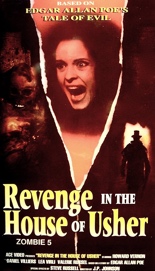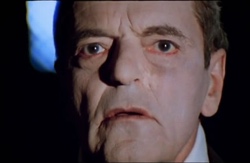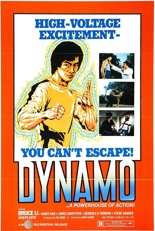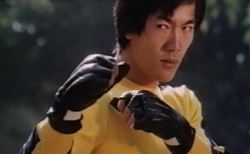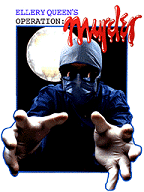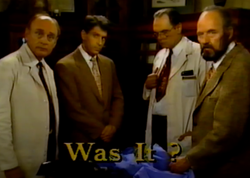
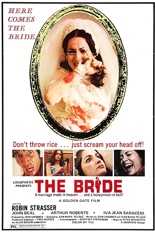 Alternately released as The House That Cried Murder and, more notoriously, Last House on Massacre Street, Jean-Marie Pélissié’s The Bride is an unassuming horror thriller worth a trip or two down the aisle.
Alternately released as The House That Cried Murder and, more notoriously, Last House on Massacre Street, Jean-Marie Pélissié’s The Bride is an unassuming horror thriller worth a trip or two down the aisle.
Head over heels in love, Barbara (soap star Robin Strasser) can’t wait to marry David (Arthur Roberts, Midnight Movie). She’s even designed and built them her dream home, a midcentury modern number that looks like a semester’s worth of geometry homework. So what’s the problem? Well, David works for her doting dad (John Beal, Amityville 3-D), who looks unfavorably on her choice of suitor: “What I’m saying is,” he tells his daughter, “I think he stinks.”
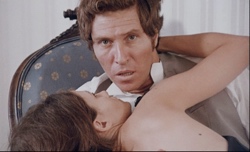 Father indeed knows best, because at their wedding reception — repeat: at their wedding reception — David ducks upstairs for a tryst with another woman, Ellen (Iva Jean Saraceni, Creepshow). Finding them in flagrante delicto, Barbara impulsively wounds David with scissors and flees the scene. Two weeks later, she’s still off who-knows-where, while David is looking to get divorced and already shacking up with Ellen. That’s when the eerie phone calls and eerier acts of aggression begin …
Father indeed knows best, because at their wedding reception — repeat: at their wedding reception — David ducks upstairs for a tryst with another woman, Ellen (Iva Jean Saraceni, Creepshow). Finding them in flagrante delicto, Barbara impulsively wounds David with scissors and flees the scene. Two weeks later, she’s still off who-knows-where, while David is looking to get divorced and already shacking up with Ellen. That’s when the eerie phone calls and eerier acts of aggression begin …
Popular opinion has it that any horror movie with an MPAA rating below the R bares no teeth. While that may be true for today’s offerings more often than not, it’s stunningly narrow-minded for product from the early 1980s and on back. The Bride is the perfect example why. Affixed with a whistle-clean PG, it may be a simple story told in a frugal 76 minutes, but it hits the right buttons as it does so. The script by Pélissié and John Grissmer — who went on to give us the incredible Blood Rage, which features snippets of this film playing at the drive-in — thrives on a macabre sense of humor, while Pélisse — in his one and only directorial chore — proves he can stage suspense effectively; one shot in David’s dream sequence, with Barbara poised like a spider waiting to pounce, stands out as chilling.
Although Saraceni is a bit shrill, the no-name actors do Pélisse proud. As shameful as it is that he never helmed another feature, even more so is that Strasser goes unheralded for a strong, layered performance. —Rod Lott

